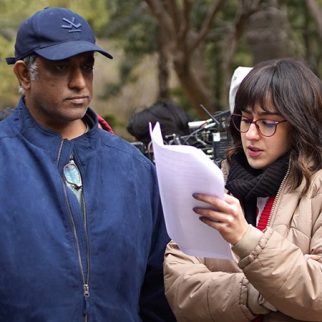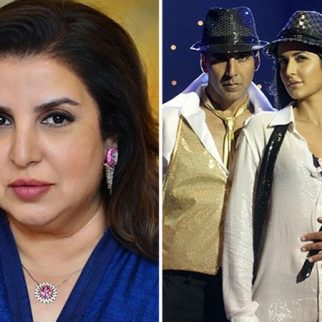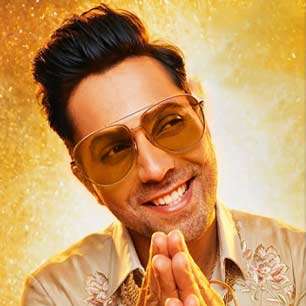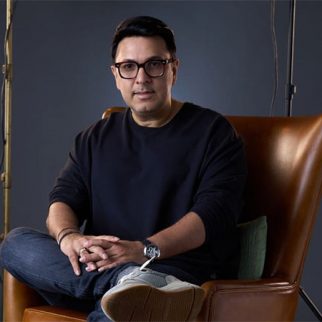The Copyright Act, 1957 (“the Act”) was enacted for the protection of the rights of copyright owners. The underlying principle is that creativity and creation of content will suffer unless protection is granted to people who invest time, effort and money in creating content. It is, therefore, no surprise that most of the provisions in the Act (barring a few exceptions such as section 52) are for the protection of copyright owners and to ensure they can exclusively exploit their content in the manner they deem fit. In so far as sound recordings are concerned, under the provisions of section 14(e) of the Act, there are three exclusive rights available to an owner of sound recording (s); the right to make any other sound recording embodying it (including storing of it in any medium (electronic or otherwise); the right to sell or give on commercial rental or offer for sale or for such rental any copy of the sound recording; and the right to communicate the sound recording to the public.
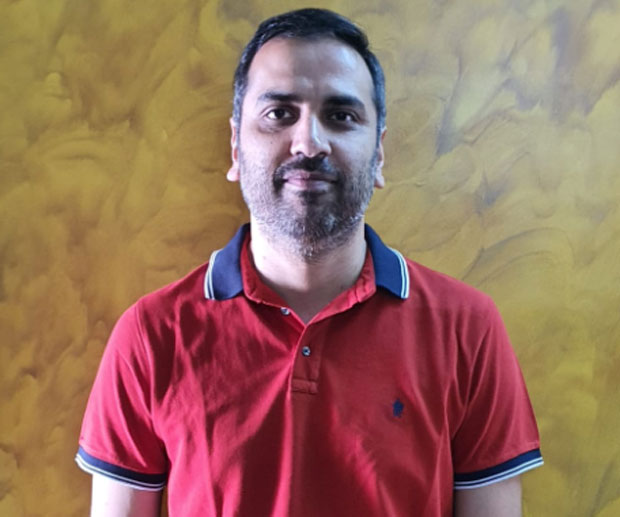
In 2012, significant amendments were introduced in the Act. One such amendment was the introduction of section 31D. It provides a statutory license to “broadcasting organizations” desirous of “communication to the public”, by way of a “broadcast” or by way of performance, a literary or musical work and sound recording which has already been published, subject to the provisions of section 31D. The same section states that the Intellectual Property Appellate Board (“the Board”) will determine the royalty payable for such broadcasts and it shall fix separate rates for radio and television broadcast. Under section 31D, copyright owners have no say in the broadcast of their content and the limited right granted to them is to participate in the proceedings before the Board for fixation of royalties’ payable for the broadcast of such content on radio or television.
Section 31D completely reverses the regime for copyright owners of literary, musical works and sound recordings for broadcasts on radio and television, from a voluntary negotiated licensing regime to a fully regulated regime; wherein a copyright owner is merely informed of the broadcast of its content on radio or television, and compensated per the royalty determined by the Board. Section 31D deviates remarkably from the fundamental principle underlying the Act i.e. a copyright owner has the exclusive right to determine all aspects of exploitation of its content. It sits as an oddball amongst most other provisions in the Act.
Not surprisingly, the constitutional validity of section 31D came to be challenged before Courts. The media for communication covered within the ambit of section 31D on a plain reading of the section are only radio and television and the term “broadcasting organization” has not been defined under the Act; consequently, all the said challenges have been preferred in respect of communication of content to the public on radio and television only. Although, section 31D has been held to be constitutionally valid by a High Court (for broadcasts on radio and television); however, some challenges are still pending before other High Courts and another before the Supreme Court. Now, that the Supreme Court is seized of the issue, it will finally be settled, at least for radio and television.
Amidst these challenges, other players, i.e., websites and applications which are accessible through the internet and are providing content streaming or download services to subscribers, started making representations to the government. They stated that section 31D ought to be read to include even streaming or downloading of content by subscribers of such websites or applications and that such websites and applications are to be treated as “broadcasting organization” within the ambit of section 31D, entitling them to a statutory license.
In a knee jerk reaction to the representations by such websites and application owners, the Ministry of Commerce Industry – Department of Industrial Policy and Promotion (“DIPP”) issued an Office Memorandum dated 05.09.2016 (“Office Memorandum”). Relying upon the definition of “communication to the public” and “broadcast” it stated that as the said definitions include broadcast of content via the internet, the term “broadcasting organization” in section 31D includes “internet broadcasting organizations”. The Office Memorandum thus attempted to enlarge the ambit of section 31D to include websites and applications exploiting content.
The issuance of the Office Memorandum added fuel to the fire. The websites and application owners now started claiming themselves to be “broadcasting organization” entitled to a statutory license. The copyright owners, on the other hand, maintained that section 31D is limited to communication of content to the public through radio and television and that it excludes websites and applications.
Express exclusion
In this case, an examination of the parliamentary debates reveals that the discussions centred on radio broadcasting organizations alone. The legislature, without much debate, decided to extend the regime to television broadcasting organizations. However, even though there were various websites and applications in operation in India, providing streaming and downloading of content even prior to 2012, the legislature intentionally omitted to discuss statutory licensing for such websites and applications. The Two Hundred Twenty – Seventh Report of the Parliamentary Standing Committee on the Copyright (Amendment) Bill, 2010, is no different and discusses statutory licensing for radio and television alone.
The fact that the legislature never included statutory licensing for websites and applications within the purview of its debates and reports shows a clear deliberate omission by the legislature to include websites and applications within the purview of section 31D.
Fallacies in the Office Memorandum
The Office Memorandum does not lend credence to the view that section 31D includes websites and applications. It only obfuscates matters and appears to be a lazy attempt by DIPP without examining all the issues. As held by the High Court of Bombay, once the conclusion is reached that the legislature has specifically excluded websites and applications from the purview of section 31D, an Office Memorandum by the executive cannot expand the scope of section 31D to include websites and applications. That will amount to the executive amending the Act. Also, the Office Memorandum uses the term “internet broadcasting organizations” without defining the same, let alone the said term being defined in the Act. It is not clear what is meant by this term and which entities are covered by it. Besides, the entire premise of the Office Memorandum appears to be flawed. The fact that the terms “communication to the public” and “broadcast” may include dissemination of content via the internet, cannot in any way lead to the conclusion that websites and applications are “broadcasting organization” as provided in section 31D. The section commences with the words “any broadcasting organization desirous of communicating to the public...”. An entity will have to establish that it is a “broadcasting organization” under section 31D which then entitles it to exercise the right of “communication to the public” of the content, an exclusive right available to a copyright owner in the Act. The Office Memorandum appears to have lost sight of the distinction between “an entity permitted to exercise certain rights” and “such rights themselves”. To determine the width of the term “broadcasting organization” based on the definitions of “communication to the public” and “broadcast” is missing the wood for the trees.
Downloading of content
Another aspect reinforcing the contention that section 31D does not include statutory licensing for websites and applications is that the only right granted to a broadcasting organization under section 31D is that of “communication to the public” of the content. A broadcasting organization has not been granted the right to permit download of sound recordings by its subscribers under section 31D. This is a separate right exclusively available to a copyright owner under section 14 (e) (ii) of the Act, i.e., to sell or give on commercial rental or offer for sale or for such rental. This is the view taken by the High Court of Bombay as well in the TIPS Case. The facility to download content is one of the most essential/regular features provided by websites and applications to their subscribers. While some websites or applications provide this feature on payment of an overall subscription fee permitting their subscribers to then download any content available on such website or application, others charge their subscribers for each sound recording downloaded by such subscriber. The exclusion of the right to permit downloading of content from section 31D, which the websites and applications claim to be an essential feature of their service, further demonstrates that it was never the legislative intent to include websites and applications.
No safeguards
A statutory licensing regime from the perspective of copyright owners takes control of content out of their hands and places it in the hands of ‘broadcasting organizations’ and the Board. Adequate safeguards must be in place to ensure the copyright owners do not suffer in such a regime. In so far as dissemination of content by websites and applications is concerned, presently that is not the case. Unlike radio and television, the websites and applications are not governed by any regulatory regime in India. For instance, the radio and television broadcasters need a service – carriage license such as the GOPA from the MIB. The television broadcasters are also governed by the Cable and Television Network (Regulation) Act, 1995 as well as the orders, directives, and regulations, promulgated by the sectoral regulator – the Telecom Regulatory Authority of India.
Websites and applications operate on a model wherein, sound recordings are offered to subscribers via online streaming and/or offline streaming by downloading the same. Payment of royalty to a copyright owner in a statutory licensing regime will typically be done based on logs of such online and offline streaming. There are very few applications that can track the utilization of such downloaded content, i.e., offline streams, by the subscribers. A large number of applications do not have technological safeguards in this respect. They are unable to report how content is streamed by a subscriber once the same is downloaded and accessed offline. This technological challenge which has a direct bearing on royalties payable to a copyright owner cannot be ignored.
Rule 30 of the Rules requires a broadcasting organization that has obtained a statutory license from a copyright owner to maintain records of the total number of works broadcast, the details of such works, and the time slot, duration and period of the broadcast, all of which can be inspected by such owner. The broadcasting organization is also required to maintain separate books of accounts for communication to the public by way of broadcast, containing such details as may be determined by the Board at the time of fixing the rate of royalty and render to the owners of rights such reports and accounts. This is to ensure complete disclosure of the entire data to the copyright owner so it can verify the correctness of royalties paid to it. A large number of websites and applications do not have the requisite technological safeguards in place to maintain such records, especially in respect of offline streaming.
Needless to say, inclusion of such entities within the scope of statutory licensing without adequate safeguards will severely jeopardize and compromise the interests of copyright owners and open floodgates for disputes. Permitting statutory licensing to websites and applications, when providing access to verifiable data to a copyright owner is still a huge technological challenge for most websites and applications will, to an extent, legitimize infringement, which is rampant in India.
Economic rationale
There does not appear to be any economic rationale in including websites and applications under the regime of statutory licensing. The economic characteristics of reselling and disseminating music through the internet are a far cry from those of conventional media of dissemination such as radio and television. Section 31D of the Act was introduced with an ostensible object of providing easy access of content to the radio industry at reasonable rates keeping the cost of investment, infrastructural costs to setup radio networks and spectrum costs, in mind. The economic rationale behind such a move permitting statutory licensing to radio and television, itself is under question before Courts and there are legitimate economic arguments to be considered against such a move.
The internet, on the other hand, is a free medium that has a low cost of investment, low infrastructural setup cost, and zero spectrum allotment cost. For instance, radio, television well as the websites and applications are all free to determine the pricing for advertisements, however, unlike radio or television, there is no carriage license fee that a website or an application has to bear to provide its services.
In the last decade, all the major websites and applications have entered into voluntary license agreements with music companies in India on negotiated terms. They do not seem to have faced any serious obstacles in obtaining easy and unhindered access to content under voluntary, mutually negotiated licenses.
Websites and applications have created substantial market value based on their ability to provide copyrighted works and have attracted substantial investments. At this stage, it does not appear that the internet as a medium needs a statutory licensing mechanism to flourish.
International Position and Treaties
As the internet as a medium has a global footprint unlike radio and television which are limited to a particular country, it may be apposite to examine the legal position in at least a few major jurisdictions. A look at two other common law jurisdictions such as the United Kingdom (“U.K.”) and New Zealand reveal there is no concept of statutory licensing for sound recordings in both the countries for radio and television broadcasts, let alone the internet. In the U.K., under the Copyright, Designs, and Patents Act 1988, there is no concept of statutory licensing and for broadcasting sound recordings on radio or television, a license is required to be taken from a copyright society such as Phonographic Performance Limited, and in the case of streaming by websites and applications, from the owner of the content. New Zealand also does not have statutory licensing and only allows for ‘compulsory licensing’ of sound recordings, and that too, solely in respect of works of copyright owners who are a member of a licensing scheme or copyright collecting society. India, by permitting statutory licensing for sound recordings even for radio and television, let alone the internet, thus appears to be sui generis.
Further, India has acceded to the World Intellectual Property Organization’s treaties (“WIPO”), i.e., WIPO Performances and Phonograms Treaty, 1996 (“WPPT”) and WIPO Copyright Treaty, 1996 (“WCT”), which extend the copyright protection to the internet and digital environment. Both these treaties delineate the rights of copyright owners in the digital environment. India’s acceptance of the same has been a significant victory for copyright owners in India. Statutory licensing for websites and applications militate against the implementation of such commitments.
Conclusion
The aforesaid analysis reveals that the provisions under the Act and the Rules tilt the balance heavily in favour of the view that “broadcasting organization” under section 31D does not include websites and applications operating over the internet. Given the present state of technology, there aren’t enough safeguards available to fully protect the interests of copyright owners if statutory licensing were to be permitted for websites and applications. There also appears to be no sound economic rationale to hold another view. Considering the transnational nature of licensing agreements, an inclusion of websites and applications into the statutory licensing regime in India would place homegrown content owners at a severely disadvantaged position in terms of their ability to license their content profitably, as compared to similarly placed content owners in other jurisdictions wherein such licensing has not been accepted.
Websites and applications as media for content dissemination have grown exponentially in the past decade on account of their labour, which has profited all stakeholders. Voluntary licensing ensures such organic growth of all the stakeholders and thus the industry. To state that voluntary licensing as a norm is beneficial only to copyright owners is to hold a myopic view of the music industry. It benefits all the stakeholders as it is an essential ingredient for generating motivation to create content and, without content, there will be no music industry. The crutches of “statutory licensing” for websites and applications will only be counterproductive.
The author is based in Delhi and is an Advocate-on-Record at the Supreme Court of India. He can be reached at harsh@harshkaushik.com. The author acknowledges the valuable inputs by Mr. Abhay Chattopadhyay and Mr. Varun Tandon, Advocates.
BOLLYWOOD NEWS - LIVE UPDATES
Catch us for latest Bollywood News, New Bollywood Movies update, Box office collection, New Movies Release , Bollywood News Hindi, Entertainment News, Bollywood Live News Today & Upcoming Movies 2025 and stay updated with latest hindi movies only on Bollywood Hungama.
